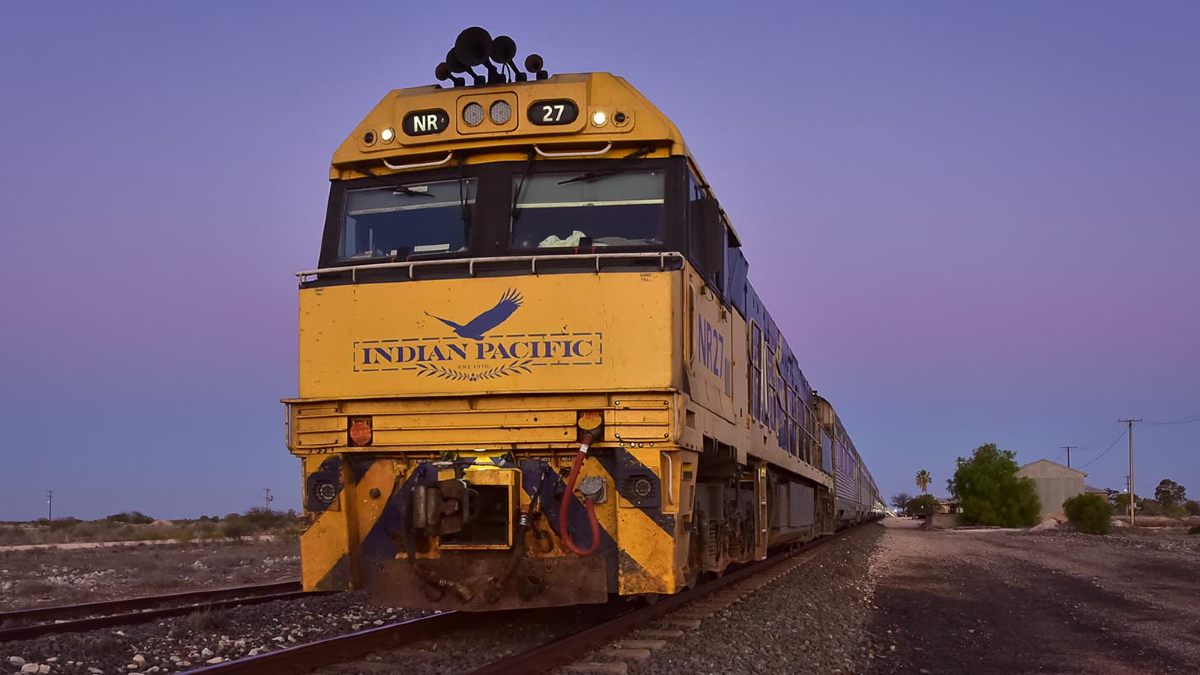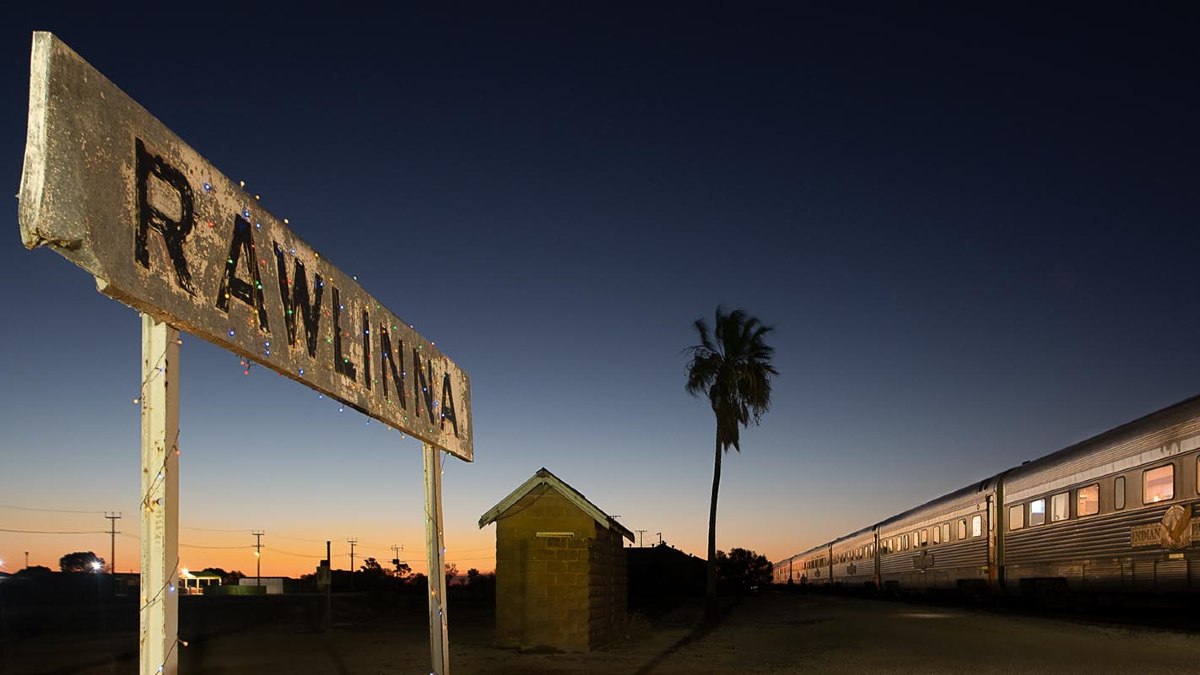Ready for the glitz and glamour of the Gold Coast, but want to save a few pennies on your holiday? Here are the top free activities to enjoy on the Gold Coast when visiting on holiday.
Why the Indian Pacific is still one of Australia’s great train trips

Get ready for the ride of a lifetime as the Indian Pacific celebrates its 50th anniversary.
An outcrop of kangaroos glows rose gold as the first sun spotlights the expanse of red sand and blue-grey saltbush that is the Nullarbor Plain.
“These are the gems. I think video gamers call them Easter eggs, because you suddenly find them,” says the Indian Pacific’s Linley Lott. “They might not give you extra points, but they are beautiful features dotted along the way.”
Everyone plays a kind of I Spy aboard the IP, as the 731-metre, 29-carriage train rolling 4352 kilometres from Sydney to Perth is affectionately known by staff, including service operations manager Linley. And, having joined the journey in Adelaide for the three days and two nights journey westbound to Perth, I’m keen to join in the game.
“Three emus,” drawls an American voice in the Outback Explorer Lounge where guests happily mingle. “Where, where?” responds a Scots burr, “I can’t see them … but ooh, look, camel at one o’clock.”
Some imagine the desert heart of Australia as an interstice of nothingness, a space between. But, like the spare aesthetic of minimalist painting, the train’s double-glazed windows frame so many questions as we rumble across the landscape on one of the world’s great train journeys.
How, for instance, does Katie Hall, fresh-faced mother of five-year-old Maggie, whose home is the half-million-hectare Kinclaven cattle station north of Rawlinna where we alight from the train, live out here?
“It is hard with the extreme temperatures, distance and dryness,” she acknowledges with a smile. “We only go shopping once a month. Maggie does School of the Air which is based in Kalgoorlie” (the nearest big town which is five hours away by car).
Trailing a cloud of dust over dirt roads, the pair have come to this remote siding 1000 kilometres east of Perth to help the train’s staff set up our alfresco feast by bonfire and lantern light.
Our dinner in the desert is a highlight of the Indian Pacific’s westbound journey and a welcome chance to stretch our train legs and breathe the desert air. (More: Five unforgettable Australian train journeys)
The train, which brings mail once a week and Santa at Christmas time to this remote outpost – as well as more than 25,000 travellers throughout the year – is about much more than linking dots on a map.
When the inaugural Indian Pacific service departed Sydney on February 23, 1970 to become the first direct train to traverse the country, it was proudly viewed as a reflection of nationhood.
More than $210 million was spent on the east-west standard-gauge project over seven years with then prime minister John Gorton using a silver-plated sledge-hammer to drive home a gold-plated dogspike on the final link.
Carrying up to 144 passengers (the maximum that could be served in three sittings in the 48-seat dining car), the opening of the transcontinental line meant those travelling from Perth to Sydney no longer had to take five trains, enduring delays between more than 84 hours spent on the rails, which were far from smooth.
Then a twice-weekly service, it became the third-longest train journey in the world after the Trans-Siberian and The Canadian – although it has since been edged out by the Shanghai to Lhasa train.
While it was billed as a luxury service for first-class ticket holders, the reality was anything but for the Red Service or economy-class passengers, who shared communal showers and toilets, with many sitting up the whole way to spare the expense of a sleeper.
The Red Service ceased in 2016 when the federal government stopped subsidising concession fares, and with it went any notion that the Indian Pacific was anything other than a high-end travel experience.
Arriving at Adelaide’s Parkland Terminal where I board the train with more than 50 others, it’s immediately apparent this trip is to be a feast for all the senses. After check-in we’re served wine and canapes in the terminal lounge accompanied by live music before we’re ushered to the restaurant for a four-course meal showcasing South Australia’s finest.
By the time we board the train ready for our 9.40pm departure we’re as well fed and chatty as the passengers who’ve travelled all the way from Sydney and are returning from various excursions in Adelaide and surrounds.
In Gold Service cabin D, Tony Sibilin, our French-born hospitality attendant, demonstrates the roll-up venetian blinds, ensuite and other features including music and commentary audio channels. Voila!

When we newcomers wander to the bar for a convivial nightcap he will transform the upholstered banquette lounges in our cabins to crisp linen beds.
Luxurious touches extend beyond the cabins, from the classically styled Queen Adelaide restaurant car with its pressed-tin ceiling, silver service and menu featuring distinctly Australian flavours like Kakadu plum, saltbush and wattleseed, to the lounge with its leather tub chairs and selection of games and books. It’s a far cry from the train’s early days.
“Back when I first started in 2002 we were still very much a courier company,” explains Linley. “People would really just fill in time while we changed drivers, refuelled, did rubbish stops. Now, the whole nature of tourism has changed. People want experiences, they want things to remember along the way.”
Hence off-board excursions to the likes of the Barossa Valley and McLaren Vale for cellar-door and culinary tastes of South Australia, and the atmospheric feast under the stars at Rawlinna.
It’s apparently just what the doctor ordered – the passenger list includes at least four medicos, including a pair of recently retired GPs from County Fife near Edinburgh. “When we got on it was like Agatha Christie on the Orient Express,” says Dr Elspeth Smith. “It is a very elegant and attractive way to travel.”
Her medico husband Drew has been “keeping a wee diary” and finds it amazing that “15 hours since we left Adelaide we are still in South Australia”.
Tina Johnsson and Mats Kronfalt, a Swedish couple living in France, are delighted to have made it aboard at all. After SBS screened The Indian Pacific: Australia’s Longest Journey in January 2019 as part of its slow TV broadcast series the IP became a hot ticket indeed.
“The first time we tried to come the train was completely booked, the second time we had to wait six months. Even then Platinum was completely booked and we were lucky to get the only Gold Superior left,” Mats says.
“I think it is marvellous,” adds Tina. “It is like a meditation for us – an adventure far away from the hectic life of cities.”
Many of the passengers are retirees, but by no means all. Keira Boxsell, a 30-something mental health nurse from Broken Hill and her wife Meaghean Duggan, are self-confessed “train nerds” and huge Harry Potter fans. “For us catching the train is like getting on the Hogwarts Express,” laughs Keira. “It’s not cheap, but we have chosen it because we want to build memories. So far, it has been worth every penny.”
Claire Bowerman, a charity food bank manager from northern England, who is accompanying her father, agrees. “My granddad loved travel and wrote a little book called Around the World By Train … Almost. In it he had a photo of the long stretch of straight railway we are on today from when he did this trip. To be honest this trip wasn’t really my first choice. Now, of course, I don’t want it to end.”

Everything you need to know about the Indian Pacific train ride
How far is it?
Sydney to Perth via Adelaide: 4325 kilometres. The trip takes three nights and four days coast-to-coast (65 hours’ travel time). Adelaide to Perth: 2669 kilometres. Takes three days and two nights (40 hours and 25 minutes’ travel time).
What's on the menu?
Dinner: Coorong Angus roasted beef tenderloin, spinach and Barossa red wine pepper jus.
Breakfast: Harris Smokehouse smoked trout and potato frittata.
Lunch: Camel curry with Afghani rice pilaf.
When is the best time to go?
In spring when the weather is kind and allows the full range of off-board experiences.
What should you take with you?
Bring a small (up to 10-kilogram) carry-on bag with smart casual clothes for a couple of days. Larger luggage is stowed at the rear of the train. Include comfy walking shoes, a long-sleeved shirt, sunscreen, insect repellent and a hat for off-train excursions, plus one or two warm items.
What are the sleeping arrangements?
There are 20 Platinum and 182 Gold Service cabins with single and twin occupancy options. Bridging the two classes, Gold Service Superior offers extra room, but only a few of these cabins are available.
Are there any must-do experiences?
As starlight dinner settings go it’s hard to top Rawlinna, a saltbush siding on the longest straight stretch of railway in the world, almost 1000 kilometres from Perth and more than 1600 kilometres from Adelaide.
Passengers enjoy canapes in the lounge before alighting to a two-course meal served under the stars by flickering lantern and firelight.
The smooth serving of a sit-down meal in the desert to 236 people is as impressive as the menu. This special Indian Pacific experience is offered on the west-bound service and only in the warmer months.
Where should I stay at the other end?
Looking for a place to stay after a trans-continental crossing? The new Adnate made a splash on the Perth skyline before its doors even opened – more than 400 cans of paint were used to create a jaw-dropping 25-storey mega-mural, billed as the tallest in the southern hemisphere.
The ninth of Accor’s Art Series Hotels, The Adnate is so named for Melbourne-based street artist Matt Adnate whose monumental works also adorn Collingwood’s public housing towers and regional Victoria’s Silo Art Trail.
His aerosol art sets a tone that is both hip and hopeful for humanity, with striking multicultural portraits greeting guests at every turn of the 250-room, $90 million hotel in Hay Street in Perth’s CBD.
The uber-cool US hospitality brand Hyde comes to town in the Miami-style first-floor marble island bar and lounge wrapped around the pool with DJ decks, sun lounges, 10-litre punch bowls and bottomless fries.
Art tours, in-room art channels and a gymnasium, as well as branded smart cars and Lekker bicycles available for hire to explore Perth and surrounds, round out a fully curated experience.
The writer travelled courtesy of Journey Beyond.





